 by Servando Gonzalez
by Servando Gonzalez
On October 14th, 1962, a CIA analyst show President Kennedy photos taken by U-2 which, he claimed, proved the presence of Soviet nuclear missiles deployed on Cuban soil. Kennedy initially had trouble seeing the missiles on the photos, but he was eventually convinced of it. A few days later, on October 22nd, President Kennedy spoke to the nation about the crisis in a televised address. This initiated what was later known as the Cuban Missile Crisis.
After the crisis was over, a veritable barrage of books and articles with scary titles have been written allegedly proving how close we were to the brink nuclear Armageddon. Nevertheless, there are many things about the crisis difficult to explain, because they simply do not add up. I will show below a few examples.
1) According to what was reported at the time, Kennedy and his close associates were surprised and shocked with the unexpected discovery of strategic Soviet missiles in Cuba.
It seems that their surprised was faked, because as early as August, 1962, the word was out in Washington that the Soviets were building missile launchers for weapons already in Cuba. Between August 31 and October 12, 1962, Senator Kenneth Keating made ten Senate speeches and fourteen public statements about the developments in Cuba. He was merely saying publicly what the American intelligence community, apparently his source of information, was muttering as loudly as they could.
Moreover, Cuban refugees, leaving the island in drones, had been reporting sightings of Soviet army trucks carrying extremely long cigar-shaped objects covered by tarpaulins. Some of the refugees strongly suspected that the cigar-shaped objects they had seen riding on Soviet trucks on Cuban highways were not Siberian Cohibas for Castro. But, instead of paying attention to the growing concern, White House press secretary Pierre Salinger criticized the television networks for giving Keating the air time to express his concerns.
2) According to most book and articles, in 1962 we were closer to the brink than ever before.
But there are some things difficult to explain. During the crisis President Kennedy ordered to defuse the nuclear warheads of the American missiles in Turkey, allegedly to avoid an accident. It was also reported that, even during the most dangerous moments of the crisis, Kennedy didn’t alert the civil defense or show any curiosity about learning how to use the secret codes to unleash a nuclear attack. Strange behavior indeed for the commander-in-chief of a country at the brink of a nuclear attack.
But one of the most striking things of the Cuban missile crisis is that the Soviets never placed their troops, nor the civilian defense, under alert. This astonishing fact is mentioned in most of the early accounts of the crisis. Later declassified top secret CIA documents confirmed the fact. At 10:00 in the morning of Tuesday the 23rd of October, CIA Director John McCone reported a strange thing to the ExComm: no signs of a general alert of Soviet forces in Cuba or around the globe had been reported.
A top secret CIA memo of October 25 clearly states that “We still see no signs of any crash procedure in measures to increase the readiness of Soviet armed forces.” A top secret memo of October 26 gave the first indications of a state of alert, but in some European satellite countries, not in the Soviet Union. As late as Friday, October 26, American intelligence sources reported from Cuba, from Moscow, and from the United Nations, that the Russians were not ready for war. It is only on October 27 that a top secret CIA memo clearly acknowledges that “No significant redeployment of Soviet ground, air or naval forces have been noted. However, there are continuing indications of increased readiness among some units.”
Surprisingly, even at that late date, the Soviets had made no attempt to mobilize their civil defense nor to prepare the population for the eventual use of fallout shelters. This was quite significant, because the Soviets had devoted considerable effort to instructing their civilian population in civil defense and had invested considerably in fallout shelters.
3) Now it can be told: we were even more closer to the brink than most people may think.
In January, 1992, during a three-day meeting that took place in Havana with the presence of Cuban, Soviet, and American scholars and officials, among them Robert S. McNamara, new declassified documents of the crisis from the different parties involved were made available to the scholars. It was during this meeting that a Soviet official, Army General Anatoly Gribkov, who allegedly was responsible for planning the operation in 1962, dropped a bombshell when he confirmed the presence of both strategic and tactical nuclear warheads on Cuban soil. However, Gribkov provided no evidence to support his claims.
Nevertheless, notwithstanding Gribkov’s unsubstantiated claims, one has to be very naive to believe that the Soviet Union could commit nuclear suicide in defense of a small island lost in the Caribbean whose leader was an unstable, self proclaimed “Marxist.” That would have been a totally foolish decision. But Soviet Premier Nikita Khrushchev —a.k.a. the “Butcher of Budapest,” and the “Hangman of the Ukraine”— was anything but a fool.
4) According to some sources, in 1962 the Soviets had deployed 32 nuclear warheads in Cuba.
The American intelligence never confirmed the presence of nuclear warheads on Cuban soil. They never found evidence of nuclear warheads in Cuba and Kennedy gave specific orders about not verifying the extraction of nuclear warheads by boarding and inspecting the Soviet ships leaving Cuba after the crisis.
Lately, perhaps enticed by juicy grants from American foundations, ex-Soviet officials engaged in a fierce competition to tell some Americans what they love to hear. In 1989 Gen. Volkogonov revealed that 20 nuclear warheads were in Cuba. In 1992, Gen. Gribkov raised the number of nuclear warheads in Cuba to 48. In 1996 Lt. Col. Anatoly Dukuchaev raised the ante to 162 nuclear warheads in Cuban soil in 1962. Like rabbits, the nuclear warheads in Cuba keep multiplying. In that fierce competition, kept heated up fueled by American money, some funny Russians were close to claim that there were more nuclear warheads in Cuba than the number the Soviets actually had at the time.
The main force behind this concerted effort in proving that nuclear warheads were in Cuba was Robert McNamara, whose main goal was finding justifications for his absurd policies as Secretary of Defense during the Kennedy administration. Later, McNamara found support for his theories from none other than his former executive action target, Fidel Castro, and from a group of Russians, among them, Sergei Mikoyan, an old KGB hand. But McNamara, Castro, and the ex-KGB operatives were very questionable sources of intelligence.
5) Did the Soviet officers in the field in Cuba had an open hand to use nuclear weapons without further authorization from Moscow?
According to Gen. Gribkov, Gen. Pliyev, the Soviet military commander in Cuba, had been given authorization to fire nuclear devices against an American invasion force if he considered it necessary, without further authorization from the Kremlin.
However, it is very difficult to believe, as some American researchers and retired senior Soviet officers later claimed, that Russian field officers in Cuba had been authorized to use tactical nuclear warheads without further authorization from Moscow. Such an action would have been tantamount to mass suicide, since a single nuclear warhead fired by Russian troops in Cuba against the U.S. would had been equivalent to a declaration of nuclear war between the United States and the Soviet Union. One has to be very naive, or have had as many vodka bottles as Gribkov, to believe that the Kremlin, whose zeal over the control of nuclear devices bordered paranoia, would have committed such act of sheer madness.
6) According to generalized opinion among American authors who have studied the crisis, the plan was Khrushchev’s idea to protect Castro from an American invasion.
Apparently, their main source was Nikita Khrushchev. In his Memoirs Khrushchev claimed that the main reason for deploying strategic missiles on Cuban soil was because Castro feared an American invasion and he wanted to protect the Cuban leader. But it is very difficult to believe that Khrushchev planned to install missiles in Cuba to protect Castro just a few days after Khrushchev had tried to overthrow the Cuban leader by force by a coup d’etat. Actually, in April of 1962, after Castro discovered and neutralized the plot, he expelled from Cuba Soviet Ambassador Kudryatsev (who also moonlighted as a senior GRU officer) and a group of his embassy KGB thugs.
Moreover, simple logic dictates that no great power is going to give missiles to any newcomer who just asks for them. The USSR installed missiles where it wanted, and nowhere else. When Mao asked for missiles the Soviets turned him down flat. Neither before 1962, nor after, did the Soviets deploy nuclear warheads beyond their borders. It was not until many years later, only after they had developed reliable devices to control its arming, that the Soviets allowed a limited number of nuclear warheads to cross their borders, and always under strict control of KGB’s special Spetnatz troops. If the Soviets didn’t trust their own army, why, then, would they risk placing nuclear missiles so close to the unstable, trigger-happy Castro? If anything, what Khrushchev would have loved was having the Americans doing the dirty job he failed to accomplish, by invading Cuba and helping him getting rid of the unreliable Fidel Castro.
He had strong reason for it. The Soviet commitment in Cuba had proved to be a calamitous failure. As seen from the Kremlin, Castro was unpredictable, volatile, undisciplined, and often nonsensical. His wholesale executions, mass arrests, and terrorist adventures against his Latin American neighbors, together with the sight of hundreds of thousands of Cubans attempting to flee his rule, raised the very Stalinist specter Khrushchev was trying to dispel with his recently announced doctrine of Peaceful Coexistence. Moreover, Castro was making a shambles of the Cuban economy and neglected to pay attention to “suggestions” coming from Moscow
In such circumstances the sensible course for Khrushchev was to cut his losses and get out of the game, particularly considering that the Soviet lines of supply to Cuba were long and extremely vulnerable. But leaving Cuba voluntarily would have been tantamount to an admission of failure and would had involved substantial loss of face. If, however, Castro could be eliminated as a result of American “aggression,” then Khrushchev and the USSR could retreat from Cuba, their honor relatively untarnished. After an American invasion of the island the failure of Communism in Cuba could be blamed not on deficiencies in Soviet-style communist management of Cuban affairs, but on “Yankee Imperialism.”
7) Another disinformation appearing on most books about the crisis is that the Soviets had deployed the missiles with cunning and stealth.
In shipping the missiles to Cuba, Americans accused the USSR of using stealth and deception. This accusation of deceit runs throughout all official US statements. The evidence indicates, however, that Soviet stealth and deception were faked. The available record suggests that, in fact, the Russians went to great pains to let the Americans discover the missiles. There is evidence that the Soviets sped up their pace of work and camouflaged the missiles only after they were sure the American U2 planes had discovered and photographed them.
The plan to set up the missiles was carried out in such a way that they would inevitably be discovered by the Americans. If one assumes that the anti-aircraft Surface to Air Missiles surrounding the bases were intended to protect the installations of the strategic missiles, then they should have been installed and ready to shoot the US planes before the strategic missiles arrived. Actually the SAM’s and other associated anti-aircraft nets only became operational when the construction of the strategic missile sites was well advanced, and the Soviets employed almost no camouflage at all to hide either set of weapons. In any case, since the SAM’s could not shoot down planes flying below 10,000 feet, these anti-aircraft missiles would not have been useful in the event of an American invasion.
Moreover both the Medium Range Ballistic Missiles and the Intermediate Range Ballistic Missiles were above ground and located in soft terrain, very vulnerable to any type of enemy attack. Although a single installation of MRBM could be built in a matter of days, the Russians were progressing very slowly in their installation. They seemed not to be in great hurry, and worked only during daylight hours.
The Cubans were concerned about the role of the American intelligence surveillance, but the Russians dismissed their concern and gave the matter no importance. The Cuban intelligence services were also aware that the CIA was interrogating Cuban refugees at the Opa Locka military base in Florida. The large number of refugees arriving in Miami was providing the CIA with a great deal of information. Castro proposed to stop the emigration flood by eliminating all available means of escape from the island, but the Soviets proposed to leave things unchanged. In that way, reasoned the Russians, the CIA would obtain a lot of contradictory information and soon stop relying on the credibility of the refugees. Many of the departing refugees had seen missiles, but, in most cases, these were just antiaircraft SAMs. To the Cubans’ dismay, the Soviets even suggested that, instead of trying to hide evidence of the missiles, it was better to let it be obvious. For the first time the Cuban personnel working at the antiaircraft missile sites were granted leaves.
The Cubans knew the quality of the American air surveillance technology. On several occasions Castro asked the Soviets to give him SAMs, and let his people operate them, but the Russians were reluctant. Although most of the Cubans assigned to the missile bases were engineering students from Havana University, the Soviets only allowed them to operate the radars.
By the beginning of August the Russians complained to the Cuban government about the lack of discipline and seditious demonstrations of the university students at the missile bases. Apparently the Cubans were frustrated by the Russians’ inaction in the face of overflying American U-2 planes. Castro himself had to make an inspection visit to the bases in order to calm down the Cubans there. Apparently Castro convinced everybody, with one important exception: Che Guevara. Major Guevara said that he would only change his opinion if somebody convinced him that the American spy planes flying over Cuba were not jeopardizing the operation. But he finally opted to accept Castro’s orders.
Contrary to the opinion of most American analysts, almost all SAM antiaircraft sites in western Cuba had reached operational status by the beginning of August, 1962. From that early date the Soviets could have fired on the American spy planes if they had wanted to.
On the morning of October 14, 1962, a U-2 entered Cuban air space and flew over the province of Pinar del Río. The Cubans watched the plane on the radar screens, appalled as the Russians did nothing. Later Castro complained bitterly about the Russian inaction. Why were the Soviets allowing the American planes to discover the missiles? It was not until the meeting with the President the morning of the 23rd of October that CIA Director John McCone reported that the Russians were beginning to camouflage the missile sites. Nobody could explain why they had waited so long to do so.
8) Finally, the CIA smelled a rat, Kennedy approved the U-2 flights, and Major Anderson photographed the missiles.
According to most American analysts, what initiated the crisis were the U-2 photographs of Soviet missile sites in Cuba on October 14, 1962. US leaders might have received information three weeks earlier if a U-2 had flown over the western part of Cuba in the last week of September. But, quite unexplainably, the U-2s were prevented from flying over that part of Cuba, precisely where intelligence reports indicated that the missiles were most likely to be.
On August, 1962, a U-2 returned with photographs of Russian SAM antiaircraft missiles being unloaded at Cuban docks. More U-2s came back with fresh pictures of more SAMs. But President Kennedy insisted there was no evidence that the Russians were moving in offensive missiles that could threaten the United States.
Though all evidence pointed to the province of Pinar del Río in the western part of Cuba as the most likely location for missile sites, a very strange thing happened: after September 5 no U-2 flights were directed over that part of the island. It was not until October 14, that a U-2 plane, reportedly by chance, took the now famous photographs of the sites under construction. Yet, the word that there were Russian missile sites in Cuba was so widespread that even Time magazine ran an article on September 21 showing a map of Cuba clustered with Soviet ground-to-air missiles, mainly in the western part of the island, west and south of Havana.
In retrospect it is clear that both the Americans and the Russians were playing a subtle cat-and-mouse game, the Russians trying, by every means, to get the Americans to discover the missiles, and the Americans trying not to discover them.
9) According to most American analysts, a US invasion of Cuba would have brought nuclear war with the Soviet Union.
The day after the Bay of Pigs invasion began, Khrushchev sent President Kennedy a message appealing to him to stop the aggression. The tone of the message, however, was not in accordance to the man who some months earlier had boasted with apocalyptic visions.
“As for the USSR, there must be no mistake about our position. We will extend to the Cuban people and its government all the necessary aid for the repulse of the armed attack on Cuba. . . We are sincerely interested in the relaxation of international tensions, but if others go in for its aggravation, then we will answer then in full measure.”
The reality, however, was quite different. When the invasion began Castro wired Russia for urgent help or at least for open solidarity, but Khrushchev ignored him until the Cuban militia had definitely beaten the invaders.
Khrushchev’s “missile rattling” about Cuba was not the first case of such bluffings. He had before threatened with rockets over Suez, over the landings in Lebanon and Jordan, and over Berlin. Khrushchev also threatened Britain and France with long-range missiles at the time of the Suez crisis, but not before he was certain that the crisis was effectively over. When the Matsu-Quemoy crisis of the fall of 1958 erupted, Soviet support came in the form of two threatening letters from Khrushchev to Eisenhower. But Khrushchev’s guarantees and promises of help to Communist China were extended only after it had become clear that the United States was not going to intervene in the affair and the threat of war was gone. Therefore, it is safe to assume that, at most, an American invasion of Cuba would have brought a strong condemnation from the USSR delegate at the UN, and a barrage of threats in the Soviet press for internal consumption only, and nothing more.
10) Another never-ending myth of the CMC is that, after the crisis was over, Khrushchev and Kennedy signed a secret pact guaranteeing the non-invasion of Cuba.
But the evidence to this is missing. In 1970 Secretary of State Henry Kissinger, disturbed over the submarine base the Soviets were building in Cienfuegos, a port on the Southern coast of Cuba, ordered his assistants to hunt through the State Department’s files looking for the written agreement he was sure President Kennedy had signed with Khrushchev. They found, to his utter amazement, that there was none.
Moreover, if the agreement ever existed, it has the dubious honor of having being applied retroactively, because the American harassment of the anti-Castro Cubans in the US began just after the Bay of Pigs invasion, a year and a half before the Cuban Missile Crisis. If American presidents from Kennedy on proved unwilling to get rid of Fidel Castro, it is not because a non-existent pact forbade them to do so, but because of some other secret reasons unknown to us.
11) Most authors who have written about the crisis depict General LeMay was a mad warmonger out of control.
General Curtiss LeMay, Air Force Chief, argued forcefully with the President that a military attack was essential. When the President questioned him about what the Soviet response might be, General LeMay assured him that there would be no reaction at all. Later the Kennedys and their buddies, as usual, made derogatory comments of General LeMay’s statements behind his back.
But LeMay was not a mad warmonger as he was depicted in a well-known film, nor was he alone. Former Secretary of State Dean Acheson made his arguments that an air attack and invasion represented the only American alternative to the US. He added that the President of the United States had the responsibility for the security of the American people and of the whole world, that it was his duty to take the only action which could protect that security, and that this meant destroying the missiles in Cuba.
Shortly before his TV address to inform the nation of his decision to impose a blockade on the Soviet ships bound for Cuba, President Kennedy met with the members of the Cabinet and informed them of the crisis for the first time. Then, he met with leaders of Congress. According to Robert Kennedy, this was the President’s most difficult meeting. Many congressional leaders were sharp in their criticism. They complained that the President should take a more forceful action -—a military attack or an invasion of Cuba–, and that the blockade was far too weak a response.
When Senators Richard Russell and William Fulbright were informed of the situation in Cuba and the presidential decision to blockade the island, they argued that a blockade could not be effective in the short time remaining before the missile sites became operational. In fact, if one assumed that the nuclear warheads were already in Cuba, as it was logical to suppose at the time, a blockade of the island seemed to be a foolhardy decision.
Dean Acheson, one of the most notable critics of President Kennedy’s decisions during the crisis, wrote later that, though the American strategy during the crisis was wrong, it succeeded in obtaining the withdrawal of the missiles simply by “dumb luck”. Acheson’s recommendation for decisive military action, namely an air strike over Cuba, was flatly rejected by Kennedy. And Acheson was not the only one with little praise for Kennedy’s decision-making abilities. General Douglas McArthur, though crediting Kennedy with political cunning, called the President “just dumb when it comes to decision making.”
12) On October 28, 1962, a missile battery under Soviet command shot down Maj. Rudolf Anderson’s U-2 while flying over the Eastern part of Cuba.
But that is not the whole truth. According to Seymour Hersh, there is strong evidence that, on October 26, 1962, a Cuban army unit attacked and overran a Soviet-manned SAM base at Los Angeles, near Banes, in the Oriente province, killing many Soviets and seizing control of the site. This was the very base that later fired the SAMs which destroyed Anderson’s U-2. Hersh based his article on information partly drawn from an interview with former Department of Defense analyst Daniel Ellsberg, who was himself citing classified material from a post-crisis study of the event. The speculation was based on an intercepted transmission from the Soviet base at Los Angeles indicating heavy fighting and casualties. Adrián Montoro, former director of Radio Havana Cuba, and Juan Antonio Rodríguez Menier, a senior Cuban intelligence officer who defected in 1987 and was living in the US, seemed to confirm Ellsberg’s thesis.
Though both Castro and the Russians have categorically denied that the attack took place, Raymond L. Garthoff, Special Assistant for Soviet bloc Political/Military Affairs in the State Department during the Kennedy administration, claims that, in fact, from October 28, the Cuban army did surround the Soviet missile bases for three days. It is evident that, whatever really happened, Castro was itching for a nuclear shoot-out between the Soviet Union and the United States.
Messages exchanged between Castro and Khrushchev on October 28, 1962, indicate that something very fishy happened that day. In his message the Soviet premier accused the Cuban leader of shooting down the American plane. Then, Khrushchev warned Castro that such steps “will be used by aggressors to their advantage, to further their aims.” In his answer to Khrushchev Castro explained that he had mobilized his antiaircraft batteries “to support the position of the Soviet forces.” Then, Castro added this cryptic remark: “The Soviet Forces Command can give you further detail on what happened with the plane that was shot down.”
Evidently, many lies have been written about the Cuban Missile Crisis, but there is a single truth.
Even disregarding the fact that photographs can be faked and doctored, nothing is so misleading as a photograph. According to the information available up to this moment, the photographic evidence of Soviet strategic missiles on Cuban soil was never confirmed by American agents working in the field. The missiles were never touched, smelled, weighed. Their metal, electronic components, and fuel were never tested. Even more important, the radiation from their nuclear warheads was never recorded; their heat signature was never verified.
Despite all recent claims on the contrary, CIA reports at the time consistently denied the presence of nuclear warheads in Cuba. Also, American planes, flying low over the missile sites and the Soviets ships, never detected any of the radiation that would be expected from nuclear warheads. The technology to detect radiation existed at the time. In the 1960s the NEDS 900 series of radiation detectors had been developed and deployed in the Dardanelles as a way to monitor the presence of nuclear weapons aboard Soviet warships transiting the strait from the Black Sea.
The Soviets were masters of deception and disinformation, and Maskirovka was an important part of the Soviet military tactic and strategic doctrine. Some western intelligence analysts suspected that, as late as 1960, not only most of the missiles parading in Red Square were dummies, but even some units of the newly created Soviet Strategic Rocket Forces were not getting real missiles. The Russians have a long tradition in the deception business. One must bear in mind that it was count Grigori Aleksandrovich Potemkim who created the first Hollywood-style cowboy film sets.
Actually, the Cuban Missile Crisis was the first mega PsyOp whose true goal was to scare the American people into accepting losing freedom in exchange for security. The Cuban Missile Crisis was a key event on the Cold War. In 1961 President John F. Kennedy initiated the Community Fallout Shelter Program. As soon as the crisis was over, CFR conspirator Nelson Rockefeller was frantically pushing the idea of building nuclear shelters in every American building, and American schoolchildren were hiding under their desks rehearsing for a coming nuclear attack. The time for Americans to live under a permanent state of fear had arrived.
The Cold War was not only a good tool to keep the American people terrorized, but it was also very profitable for the military-industrial-banking complex. But the unexpected implosion of the Soviet Union in 1991 created a vacuum, which the conspirators had to fill.
The second mega PsyOp, whose only purpose was terrorizing even more the American people in order for them to accept the losing of freedom under the name of security, was the 9/11 operation which unleashed the so-called War on Terror and was used as a pretext to create the Office of Homeland Security, the TSA and other similar aberrations.
Currently, were are suffering the effects of the third mega PsyOp disguised as an effort to protect us from an invisible virus. As in the previous two, this one will result in more loss of freedom and more government control over the American people.
For the whole story you may read my book The Nuclear Hoax: Nikita Khrushchev and the Cuban Missile Crisis. It reads like a Tom Clancy thriller.
© 2021 Servando Gonzales – All Rights Reserved
E-Mail Servando Gonzales: servandoglez05@yahoo.com
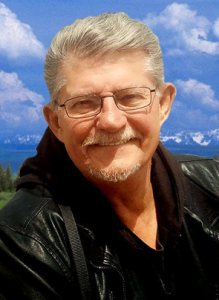 By Roger Anghis
By Roger Anghis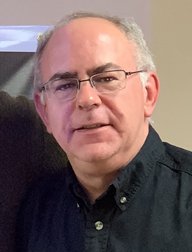 By Rob Pue
By Rob Pue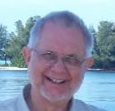 By Andrew C. Wallace
By Andrew C. Wallace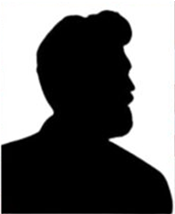 By Lex Greene
By Lex Greene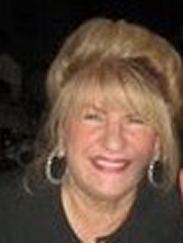 By Joan Swirsky
By Joan Swirsky Right by the side of these inflamed Muslim women (and some husbands) are Black mothers (and some husbands) who are furious that CRT is determined to “teach” their children equally harmful things, such as:
Right by the side of these inflamed Muslim women (and some husbands) are Black mothers (and some husbands) who are furious that CRT is determined to “teach” their children equally harmful things, such as: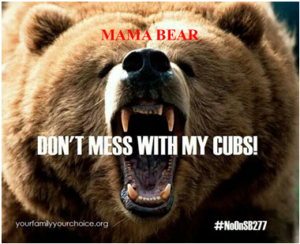 I left out the White parents who started what has now become a nationwide protest. The whole point of Critical Race Theory is to prove to innocent school children that the triple evils in America––the Constitution, Capitalism and Christianity––were all introduced by malevolent White men.
I left out the White parents who started what has now become a nationwide protest. The whole point of Critical Race Theory is to prove to innocent school children that the triple evils in America––the Constitution, Capitalism and Christianity––were all introduced by malevolent White men. BETRAYAL!
BETRAYAL! This nationwide outrage of parents has been effective. As blogger Fred Miller
This nationwide outrage of parents has been effective. As blogger Fred Miller  HISTORICAL PRECEDENT
HISTORICAL PRECEDENT By: Devvy
By: Devvy Don’t know why it took so long, but over the past few days, suddenly, it’s all over the Internet.
Don’t know why it took so long, but over the past few days, suddenly, it’s all over the Internet. 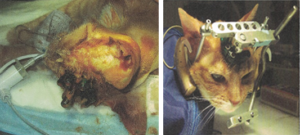 NIH (National Institutes of Health) is under HHS (Dept. of Health Human Services) headed up by another sociopath, Xavier Becerra [D]. The buck for spending stops at his desk. $3 MILLION of our tax dollars went to fund heinous experiments at the University of Wisconsin-Madison where cats were drilled into their heads, deafened and then killed.
NIH (National Institutes of Health) is under HHS (Dept. of Health Human Services) headed up by another sociopath, Xavier Becerra [D]. The buck for spending stops at his desk. $3 MILLION of our tax dollars went to fund heinous experiments at the University of Wisconsin-Madison where cats were drilled into their heads, deafened and then killed.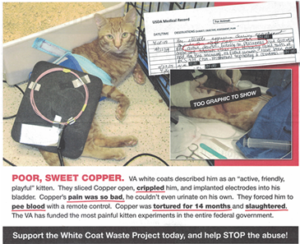 Rise for Animals
Rise for Animals By Devvy
By Devvy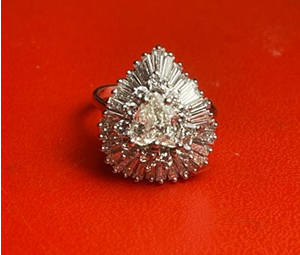 The ring has been appraised by a licensed appraiser in San Antonio (Texas) at $14,000.00. That gorgeous ring is platinum. The center diamond is two carats; surrounding diamonds one carat. This is a first-class ring.
The ring has been appraised by a licensed appraiser in San Antonio (Texas) at $14,000.00. That gorgeous ring is platinum. The center diamond is two carats; surrounding diamonds one carat. This is a first-class ring.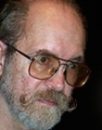 by Lee Duigon
by Lee Duigon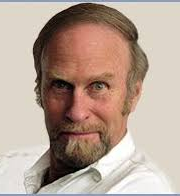 By Frosty Wooldridge
By Frosty Wooldridge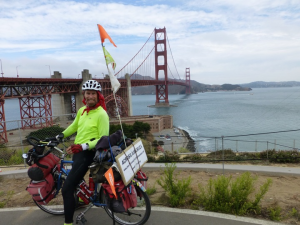 But something else “spread” across America: waistlines. From normal 33-inch waists in 1965, today, men feature 43-to-53-inch waistlines. Women carry more flab around their arms than Jabba the Hutt in the Star Wars movie. Young children sport pot bellies before they reach their teens. A full 2/3 of American society suffers from overweight by 40 to 50 pounds…and half of that number suffers morbid obesity.
But something else “spread” across America: waistlines. From normal 33-inch waists in 1965, today, men feature 43-to-53-inch waistlines. Women carry more flab around their arms than Jabba the Hutt in the Star Wars movie. Young children sport pot bellies before they reach their teens. A full 2/3 of American society suffers from overweight by 40 to 50 pounds…and half of that number suffers morbid obesity.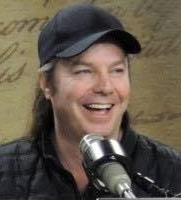 By Bradlee Dean
By Bradlee Dean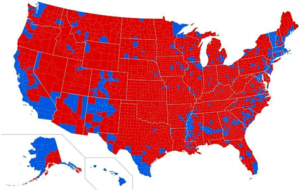 This 2020 County Election Map proves the point…
This 2020 County Election Map proves the point…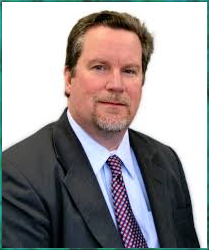 By Cliff Kincaid
By Cliff Kincaid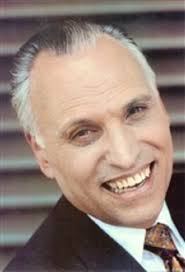 By Sidney Secular
By Sidney Secular By: Amil Imani
By: Amil Imani By Paul Engel
By Paul Engel By: Devvy
By: Devvy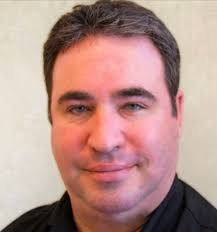 By George Lujack
By George Lujack By Steven Yates
By Steven Yates By Cherie Zaslawsky
By Cherie Zaslawsky by Dennis Cuddy, Ph.D.
by Dennis Cuddy, Ph.D.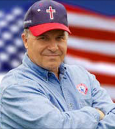 By Dave Daubenmire
By Dave Daubenmire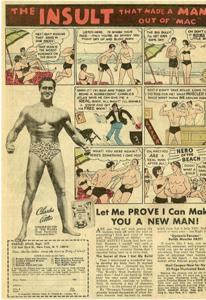 But the American Church is the 98-pound weakling that Charles Atlas used to talk about. At some point Christians are going to have to hit the weight room and fight back against the Luciferian bullies. Getting one’s ass kicked does not make one more Holy. Fighting pressure does. In fact, it is often called “resistance training.” At the heart of resistance training is the act of pushing back. The American Church has been taught that “pushing back” is un-Christian. That is a socialist LIE. Standing up to and resisting evil builds character.
But the American Church is the 98-pound weakling that Charles Atlas used to talk about. At some point Christians are going to have to hit the weight room and fight back against the Luciferian bullies. Getting one’s ass kicked does not make one more Holy. Fighting pressure does. In fact, it is often called “resistance training.” At the heart of resistance training is the act of pushing back. The American Church has been taught that “pushing back” is un-Christian. That is a socialist LIE. Standing up to and resisting evil builds character. by Servando Gonzalez
by Servando Gonzalez By Karen Schoen
By Karen Schoen By Kelleigh Nelson
By Kelleigh Nelson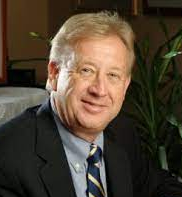 By Michael Peroutka
By Michael Peroutka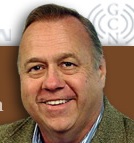 By Butch Paugh
By Butch Paugh By JW Bryan
By JW Bryan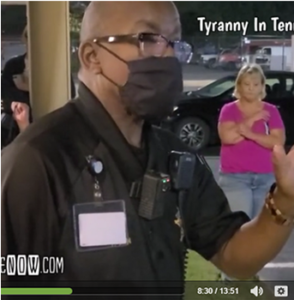 These parents were denied entrance to a public meeting that affects their own children. And just who created the mask mandate?
These parents were denied entrance to a public meeting that affects their own children. And just who created the mask mandate?
 By Andrew C. Wallace
By Andrew C. Wallace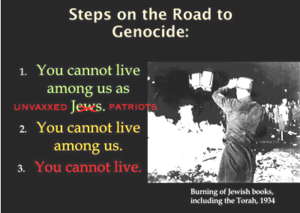 History repeats itself; the destruction of the past, including historic monuments, and the burning of books is here again. “You cannot live amongst us unless you have taken the jab,” is the new mantra…do you have your vax passport or will you wear a star on your clothes?
History repeats itself; the destruction of the past, including historic monuments, and the burning of books is here again. “You cannot live amongst us unless you have taken the jab,” is the new mantra…do you have your vax passport or will you wear a star on your clothes? The latest victim of “cancel culture” is a renowned composer who survived China’s Cultural Revolution only to be accused by college undergraduates of racism for showing the 1965 film “Othello” featuring Laurence Olivier. Othello was written by Shakespeare and the “woke” students are demanding the destruction of written works as well as the ruination of the professor who defied the agenda and taught literary truth.
The latest victim of “cancel culture” is a renowned composer who survived China’s Cultural Revolution only to be accused by college undergraduates of racism for showing the 1965 film “Othello” featuring Laurence Olivier. Othello was written by Shakespeare and the “woke” students are demanding the destruction of written works as well as the ruination of the professor who defied the agenda and taught literary truth.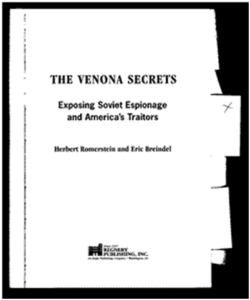 Usurper Biden nominee, Saule Omarova, to run the Office of the Comptroller of the Currency.
Usurper Biden nominee, Saule Omarova, to run the Office of the Comptroller of the Currency. 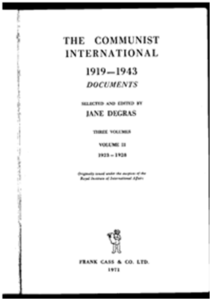 “Oh, but, who cares what some old dead guy said in a dusty old book years ago? Well, try: ‘
“Oh, but, who cares what some old dead guy said in a dusty old book years ago? Well, try: ‘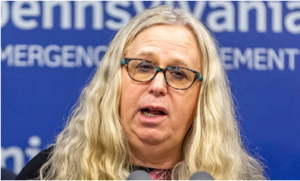 Dr. Rachel Levine, Pennsylvania’s former top health official, was confirmed by the Democrat controlled Senate and is now the Assistant Secty of HHS. A mentally ill individual who is forever a biological male playing dress up.The list goes on but it makes one nauseated.
Dr. Rachel Levine, Pennsylvania’s former top health official, was confirmed by the Democrat controlled Senate and is now the Assistant Secty of HHS. A mentally ill individual who is forever a biological male playing dress up.The list goes on but it makes one nauseated. It is well known that when there is a large number of deaths related to a vaccine that vaccine is pulled. This ’vaccine’, however, seems immune to this standard procedure. There have been more deaths related to this ‘vaccine’ than all other vaccines in history combined yet our government is still ‘mandating’ that we all get it. Look at the chart below from the CDC on this subject:
It is well known that when there is a large number of deaths related to a vaccine that vaccine is pulled. This ’vaccine’, however, seems immune to this standard procedure. There have been more deaths related to this ‘vaccine’ than all other vaccines in history combined yet our government is still ‘mandating’ that we all get it. Look at the chart below from the CDC on this subject: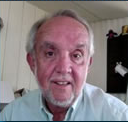 By John Kaminski
By John Kaminski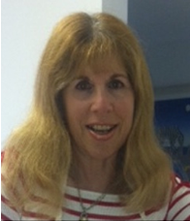 By Caren Besner
By Caren Besner If you haven’t read about the mRNA trials for seasonal flu shots…it’s
If you haven’t read about the mRNA trials for seasonal flu shots…it’s  By Cliff Kincaid
By Cliff Kincaid By Frosty Wooldridge
By Frosty Wooldridge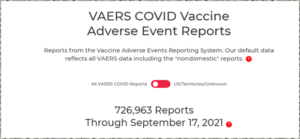 In this next graph presented by the CDC and VAERS, you can see that for 30-years since the creation of the VAERS reporting system, the reporting of adverse vaccine DEATH reports remained very low and constant throughout.
In this next graph presented by the CDC and VAERS, you can see that for 30-years since the creation of the VAERS reporting system, the reporting of adverse vaccine DEATH reports remained very low and constant throughout.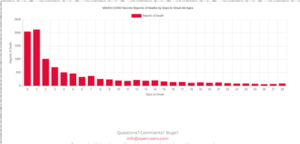 But you can also see that people continued dying after the first few days, although in smaller numbers so far, based on the data currently posted by the CDC and VAERS.
But you can also see that people continued dying after the first few days, although in smaller numbers so far, based on the data currently posted by the CDC and VAERS.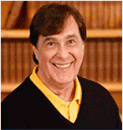 By Tom DeWeese
By Tom DeWeese The funny thing about those charges is that all I have ever done is quote the proponents of Agenda 21 and its policy of Sustainable Development. It started with Agenda 21, then we got a remake called Agenda 2030, followed by the Green New Deal, and most recently the Great Reset. In every case, proponents assure us it’s all just a progressive (and voluntary) drive toward a better life for everyone.
The funny thing about those charges is that all I have ever done is quote the proponents of Agenda 21 and its policy of Sustainable Development. It started with Agenda 21, then we got a remake called Agenda 2030, followed by the Green New Deal, and most recently the Great Reset. In every case, proponents assure us it’s all just a progressive (and voluntary) drive toward a better life for everyone.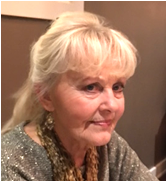 By Jytte Walter
By Jytte Walter